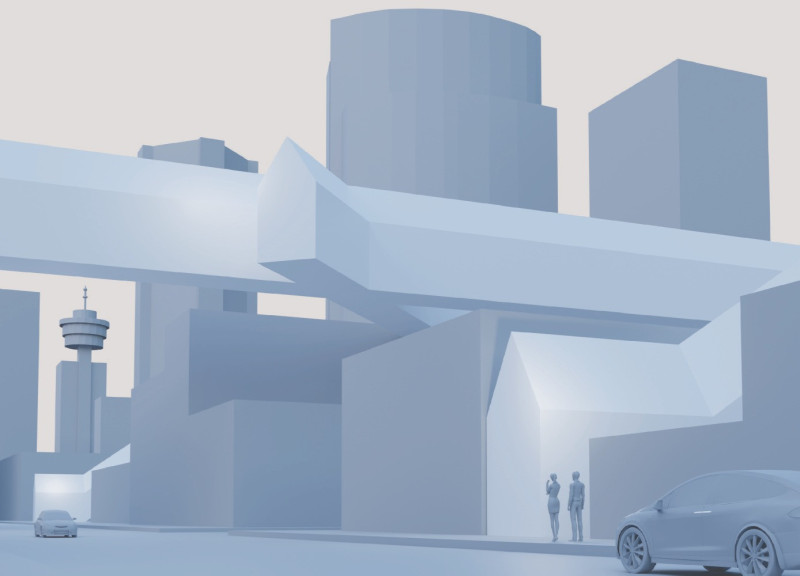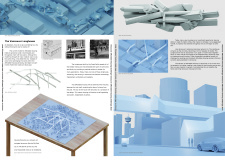5 key facts about this project
The layout of the Vancouver Longhouse employs an organic configuration, allowing dwellings to interconnect and form a network. This approach enhances accessibility and encourages movement, aligning with the existing urban infrastructure of Greater Vancouver. The project advocates for a model that promotes shared public spaces, ultimately redefining how housing interacts with its environment.
Materiality plays a significant role in the Vancouver Longhouse. It employs a combination of wood, steel, glass, and concrete to create a balance between aesthetic appeal and structural durability. The use of wood not only pays homage to the cultural significance of longhouses but also imbues the design with warmth and community spirit. Steel framing ensures structural integrity while allowing for flexible design options. Glass is strategically used to foster transparency and visual connections among spaces, blurring the boundaries between indoor and outdoor living. Concrete serves as the foundation, providing stability and longevity to the structure.
Incorporating unique design approaches, the Vancouver Longhouse prioritizes social sustainability. Unlike conventional housing models, it fosters interdependence among residents, reshaping the perception of urban living beyond mere private ownership. By creating spaces that encourage communal interaction and collaboration, the project addresses the social fabric of urban life. Moreover, it seeks to inspire policy shifts that facilitate more community-oriented development rather than profit-driven agendas.
The architectural plans of the Vancouver Longhouse detail the innovative configuration of housing units and communal spaces. Architectural sections reveal insights into spatial relationships and the integration of various materials, illustrating a cohesive vision. Readers interested in understanding the specific architectural designs and ideas that contribute to this project are encouraged to explore the comprehensive presentation for detailed insights into the Vancouver Longhouse’s design and functionality.























